
The 25th James Bond movie No Time To Die arrives in Cineworld in September, and we're counting down the days by revisiting all the 007 movies in chronological order of release.
In honour of Daniel Craig's swansong as 007, we're taking a nostalgic trip back through time. Next up: Pierce Brosnan makes his final Bond appearance in Die Another Day.
What is the story of Die Another Day?
While on a covert North Korean mission to assassinate the despotic Colonel Tan-Sun Moon (Will Yun Lee), British secret agent James Bond/007 (Pierce Brosnan) is betrayed by an unknown source, and taken into captivity. He's held and tortured by the army for several months, before MI6 reluctantly agrees to exchange him for terrorist Zao (Rick Yune), Moon's right-hand man.
Restored to health and back in active service, Bond seeks to track down the person who betrayed him. With the help of CIA operative Jinx (Halle Berry), Bond discovers that the trail leads to rich industrialist Gustav Graves (Toby Stephens), and his vast ice palace in Iceland. Graves has designed a space laser operating in Earth's orbit that refracts the sun through diamonds, and while Bond attempts to stop him, he uncovers more than a few shocking surprises.
How did Die Another Day get made?
In 2002, the James Bond franchise celebrated its 40th anniversary, and the pressure was on new movie, Die Another Day, to make a splash. The film was Pierce Brosnan's fourth outing as Britain's greatest secret agent, following hot on the heels of commercial successes GoldenEye, Tomorrow Never Dies and The World Is Not Enough. It would, however, turn out to be a landmark movie for a very different reason: this was the point where Brosnan's Bond went badly out of date, compromising the very future of the 007 character.
Of course, one of the enduring qualities of Bond is his adaptability, which also encompasses the sheer number of actors that have played him. Sean Connery set the standard, George Lazenby gave it a single shot, Roger Moore brought the humour, Timothy Dalton brought the danger and Pierce Brosnan wrapped up the positive facets of all his predecessors in one slick package. There's also no one way to make a Bond film, and more often than not the series has been shaped by the political and pop culture landscape that surrounds each individual film.
For that reason, it's little surprise that Die Another Day emerged in November 2002 as a CGI-ridden, excessively over-the-top adventure, as this was in keeping with the action movie trends that had preceded it. However, there was one enemy that Bond couldn't have foreseen, and his name was Jason Bourne, an altogether grittier, more down to Earth espionage hero who arrived on the big screen just prior to Die Another Day's release. As played by Matt Damon, Bourne starkly exposed the logical fallacies and lightweight nature of the Brosnan Bond era (more on which momentarily).
The screenplay for Die Another Day was developed by Neal Purvis and Robert Wade, who had worked on The World Is Not Enough and would eventually become the in-house Bond team on the later Daniel Craig films. After working titles like 'Second Sun' and 'Fire and Ice' were ditched, Die Another Day was chosen, a Bond name that doesn't owe itself to an Ian Fleming source. In fact, very little of Die Another Day's story owes itself to the relatively grounded world of Fleming, barring the relatively gritty opening sequence where Bond is captured and tortured in North Korea. For the first and only time in the series, the sequence is interwoven into the opening credits, designed by Danny Kleinman, an audacious and bold start for a Bond film that promises great things. Sadly, this potential is never capitalised on.
Having turned to Martin Campbell, Roger Spottiswoode and Michael Apted for the preceding Brosnan movies, producers Michael G. Wilson and Barbara Broccoli elected New Zealand's Lee Tamahori to helm Die Another Day. The filmmaker was best known for his gritty homegrown drama Once Were Warriors, exploring latent domestic abuse in the Maori community, and underrated wilderness adventure The Edge, starring Anthony Hopkins and Alec Baldwin. There was little in his back catalogue to suggest a movie on Die Another Day's scale, although Apted, a director famous for character-driven dramas, had adapted to the formula with The World Is Not Enough.
Brosnan praised Tamahori at the time of filming as "wild and passionate", a stark contrast to the "methodical" Martin Campbell who worked on GoldenEye. One senses that Tamahori brought more energy than discipline to Die Another Day, seemingly working from a simple, if misguided, directive that more is more. The director goes all-in on the classic Bond elements, from the super-villain's lair to the love scenes (for once, there's a relatively explicit sex scene in a Bond movie) to, most notoriously, the invisible Aston Martin Vanquish, widely considered the moment where the franchise jumped the shark tank (or piranha-infested pool).
Brosnan himself confessed he was less than pleased with the end result, and former Bond actor Roger Moore also thought the movie's reliance on CGI was weak. It's a pity because the movie starts off strongly, and the various 40th anniversary Easter Eggs studded throughout the movie are more than enough to induce nostalgic chuckles. These are both overt (Bond strolling through Q's lab, fiddling with gadgets like knife-equipped shoes and jet packs), and covert (villain Gustav Graves riffing on the Diamonds are Forever theme, stating "Diamonds are for everyone").
Die Another Day was produced on a budget of $142 million, the largest in the series so far – and it shows. The movie has an appropriately outlandish sense of scale, most apparent in Graves' vast ice palace which reportedly took six months to construct in Iceland. What a shame, therefore, that the shoddy CGI effects destabilise the audience, approximating a video game while dishonouring the legacy of classic Bond production designer Ken Adam.
Production made use of the famed 007 Stage at Pinewood Studios in the UK, initially built for 1977's The Spy Who Loved Me. In addition to Iceland, scenes were shot in Cadiz, Spain, Hawaii (the opening surfing sequence set in North Korea) and the Eden Project in Cornwall (the interior of Graves' biodome). The sense of globe-trotting scale is in-keeping with the nature of the Bond franchise; would that the script, character development and visual effects received more attention.
One laments the fact that Brosnan, a perfectly capable and occasionally excellent actor, wasn't given better material to work with during his run. The opening of Die Another Day bravely shows Bond preparing to face near-certain death: having been tortured for several years in North Korea with scorpion venom, he believes he has been abandoned by his own allies, and will face a firing squad. But in a clever twist, it's revealed he is instead being exchanged for Zao, a baddie with diamonds studded in his face who demanded a lot more screen time.
Brosnan acts this scene brilliantly, and it sets up a theme of betrayal that no doubt Timothy Dalton would have sunk his teeth into. Who gave Bond up to the North Korean authorities? It's an intriguing set-up that unfortunately gives way to the stupidest Bond reveal of them all: that the rampaging Colonel Moon has, during the time of Bond's incarceration, been effectively reborn as white industrialist Gustav Graves. Even by the standards of the frequently ridiculous Bond saga, this is a difficult twist to take, although it does set up an enjoyably hammy performance from Toby Stephens, at the time the youngest actor to portray a Bond villain.
The movie also introduces Halle Berry as Bond's CIA counterpart Jinx, who is first seen emerging out of the water, Ursula Andress-style. At the time, Berry was hot from her Oscar win for Monster's Ball, but the character is sadly underdeveloped, and a proposed series of Jinx spin-off movies was also put on ice. In terms of strong female Bond characters, one must instead look to the likes of Carey Lowell's Pam Bouvier from 1989's Licence to Kill. Certainly, Berry saying lines like "Yo momma" doesn't help her cause.
Faring much better is Rosamund Pike as the appropriately named Miranda Frost, the turncoat MI6 agent who is ultimately revealed to be the one who betrayed 007 in North Korea. It was Pike's debut film performance, and she was cast mere days before shooting began (she even had to leave filming for one day to attend her Oxford University graduation ceremony). Pike's chilly and austere performance is laced with a sense of self-awareness and resolve that's both funny (coldly rebuffing Bond's initial advance) and ultimately shocking (she's one of the few characters in the franchise to have got the better of 007, although she's ultimately killed in a swordfight with Jinx).
Under the supervision of veteran second unit director Vic Armstrong, Die Another Day doesn't skimp on the stunts and set-pieces. This includes a logistically complex hovercraft chase during the opening North Korea sequence, which posed a nightmare for the stuntmen forced to ride the notoriously hard-to-handle vehicles. Later on, during the Aston Martin vs Jaguar chase in Iceland, the production constructed four of each car, all equipped with four-wheel drive and shot on a frozen lagoon that had been blocked with a temporary dam.
Die Another Day's go-for-broke attitude does sometimes induce laughs in the right places. John Cleese's Q, a replacement for the late Desmond Llewelyn, appears to do a Monty Python-style silly walk when his body is refracted through the invisible Aston Martin. And the climactic virtual reality scene, where Bond finally appears to seduce Samantha Bond's Moneypenny, is a canny subversion of the long-standing sexual chemistry between the two characters.
It would, in fact, be Bond's final appearance as the character, one she had made her own right from the moment in GoldenEye when she skewered 007's ego with a reference to a theatre date. Judi Dench's M, meanwhile, would later be retained for the Daniel Craig movies. For other members of the Brosnan era, however, like Colin Salmon's Charles, it would be their last hurrah.
In the end, it's hard to be too positive about Die Another Day when it self-destructs with idiotic sequences like a space laser chasing Bond across the ice. This culminates in the notorious sequence where Bond windsurfs on a CGI wave to safety; if ever there was proof that the 007 franchise needed saving, this was it.
READ MORE
- No Time To Die and the 6 James Bond movies we never got to see
- 7 actors who could play James Bond after Daniel Craig retires
- Shaken and stirred! Daniel Craig's defining 007 moments
What music is on the Die Another Day soundtrack?
As a sign of Die Another Day's mediocrity, even the usually reliable composer David Arnold is tripped up by his excessively bleepy and processed soundtrack. The score's failings stem directly from the title song by Madonna, surely the worst in the history of the franchise. (It takes some doing to top Lulu's The Man With The Golden Gun, but she manages it.)
Madonna's staccato vocals combined with dated rhythmic pulses and electronics completely fail to capture the rich musical legacy of Bond; as if to compensate, some staccato string lines are thrown in erratically to seemingly adorn the tune with a sense of sophistication. Needless to say, it doesn't work, and not even the exorbitantly expensive music video (at $6 million, one of the most expensive ever made) helps the situation. The presence of an extended Madonna cameo in Die Another Day itself, playing fencing instructor Verity, was understandably the subject of much critical derision.
As is always the case, when the composer isn't involved in the song, it means the underscore cannot drink from the same well (not that 'Die Another Day' has any kind of memorable melody whatsoever). Arnold's previous two scores, Tomorrow Never Dies and The World Is Not Enough, knocked it out of the park by walking a fine line between John Barry-style elegant sophistication, and late-nineties contemporary wrinkles. Die Another Day, however, falls into the trap of becoming poor imitation dance/trance music, lacking the necessary foreground element of the orchestra.
Nevertheless, Arnold is otherwise an excellent composer, and there are some memorable moments in the score. As ever, Arnold is loyal to the main Bond theme, perhaps overly so, in compensating for the poor dialogue and shoddy visual effects. Or maybe it's to honour the character's 40th anniversary at the time of the film's release; either way, it's an indestructible piece of music, and its every application is designed to stoke feelings of adrenaline and nostalgia. (In the track 'Kiss of Life', listen out for the bleeps that introduced the Dr No gunbarrel music back in 1962.)
When Arnold does decide to place the orchestra front and centre, for example in the sword fight and Icarus space laser sequences, the music attains a level of majestically rhythmic power. The music for Icarus is one of the rare uses of a choir in the Bond score; the last score to do so prior to Die Another Day was Barry's arrestingly lovely Moonraker.
There's also a suitably imposing, trombone-led villain's theme that, cleverly, is first heard during the North Korean sequences, before later being applied to Graves. This is Arnold's coded way of telling us that North Korean despot Colonel Moon and Graves are the same person, way in advance of the twist.
Elsewhere, however, the score jitters and flitters around with none of the coherency we've come to expect from Arnold's Bond work. The various samples and drum kits during the Aston Martin vs Jaguar ice chase have dated badly, and the climactic fight on the Antonov jumps around all over the place without settling on a consistent tone. One must level some of the blame at director Lee Tamahori, whose erratic, excessive direction must have made it difficult for Arnold to locate inspiration. Fortunately, the composer would surge back with his excellent score for 2006's Casino Royale.
How was Die Another Day received?
At the time of its release, Die Another Day became the most financially successful Bond movie of them all, grossing $432 million worldwide. However, to paraphrase an earlier Bond movie, box office grosses are not enough, and in the short space of time between the end of production and the film's release, cultural appetites towards action cinema had changed drastically.
As mentioned, this was largely driven by The Bourne Identity, the first in the eventual Jason Bourne quadrilogy, starring Matt Damon. The Good Will Hunting Oscar-winner emerged as an action hero of unexpected credibility and depth, lacing his character, amnesiac assassin Jason Bourne, with grace notes of intelligence and resourcefulness. Here was a spy (originated by author Robert Ludlum) who didn't need gadgets to escape dire situations, and who wasn't reliant on outdated attitudes towards female characters.
The Bourne Identity was released in October 2002, just before Die Another Day, and proved a critical and commercial smash with grosses of more than $200 million worldwide. And just as a new franchise was born, the Bond series was facing another of its many existential crises. With its reliance on quips, hardware and tiresome effects, it was alleged that Die Another Day had gone too far. Producers Broccoli and Wilson certainly thought so; spurred on by The Bourne Identity's success, they decided it was time to go back to basics, and fashion a new Bond who wasn't simply an agent of mindless destruction, but a grounded human being in whom audiences could invest.
Broccoli and Wilson's decision was later cemented by the success of The Bourne Supremacy, released in 2004, which again grafted palpable character emotion to full-throttle action sequences. They also cited the acclaimed approach of Christopher Nolan's Batman Begins (2005), which turned the concept of the origin story into a lucrative, artistically credible format. The end result: in October 2005, Daniel Craig was hired to portray a more rough-hewn, yet recognisably human, 007 in Casino Royale, one better suited to mid-noughties appetites.
Of course, lost in the mix was Brosnan himself. Die Another Day was the fourth Bond entry in his four-film contract, but he expressed enthusiasm about reprising the role again, while being aware of the criticism directed at Roger Moore for A View To A Kill. (When the film was released in 1985, Moore retired from the role at the age of 58, and was alleged to have been much too old for the part.) As the years rolled on, Brosnan began to doubt whether he would return to play 007 again, and his departure was eventually confirmed in 2004.
Brosnan recalls: "Barbara [Broccoli] and Michael [Wilson] were on the line – 'We're so sorry'. She was crying, Michael was stoic and he said, 'You were a great James Bond. Thank you very much' and I said, 'Thank you very much. Goodbye.' "That was it. I was utterly shocked and just kicked to the kerb with the way it went down."
It was an ignominious end for a perfectly decent Bond actor who was denied the chance to show us what he was fully capable of. There had always been flashes of darkness and grit in Brosnan's Bond, from his betrayal at the hands of Alec Trevelyan in GoldenEye, to his cold-blooded execution of the traitorous Elektra King in The World Is Not Enough. But these moments were too sporadic, surplus to requirements in a Bond era that demanded more explosions, toys and jokes.
It would eventually fall to Daniel Craig to fashion a Bond portrayal that got under our skin, reminding us of what author Ian Fleming had originally envisaged.
What was the next movie in the James Bond series?
Daniel Craig made his debut as 007 in Casino Royale, released in 2006.
When is No Time To Die released in the UK?
Click here to book your tickets for No Time To Die, which is released on 30th September. Don't forget to tweet us your favourite James Bond movies @Cineworld.


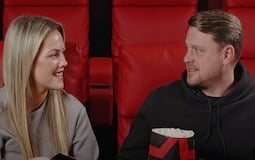
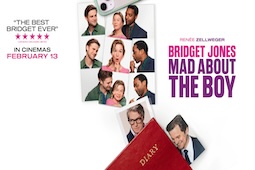
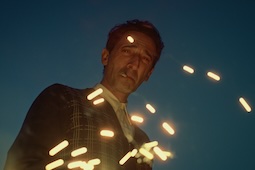
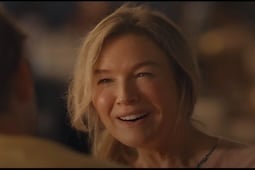

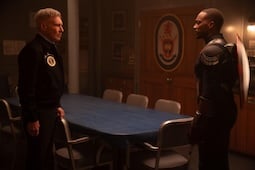

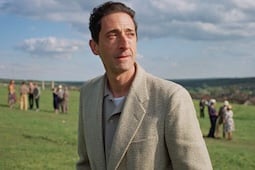
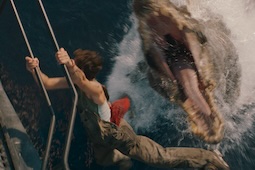




.jpg)
.png)






